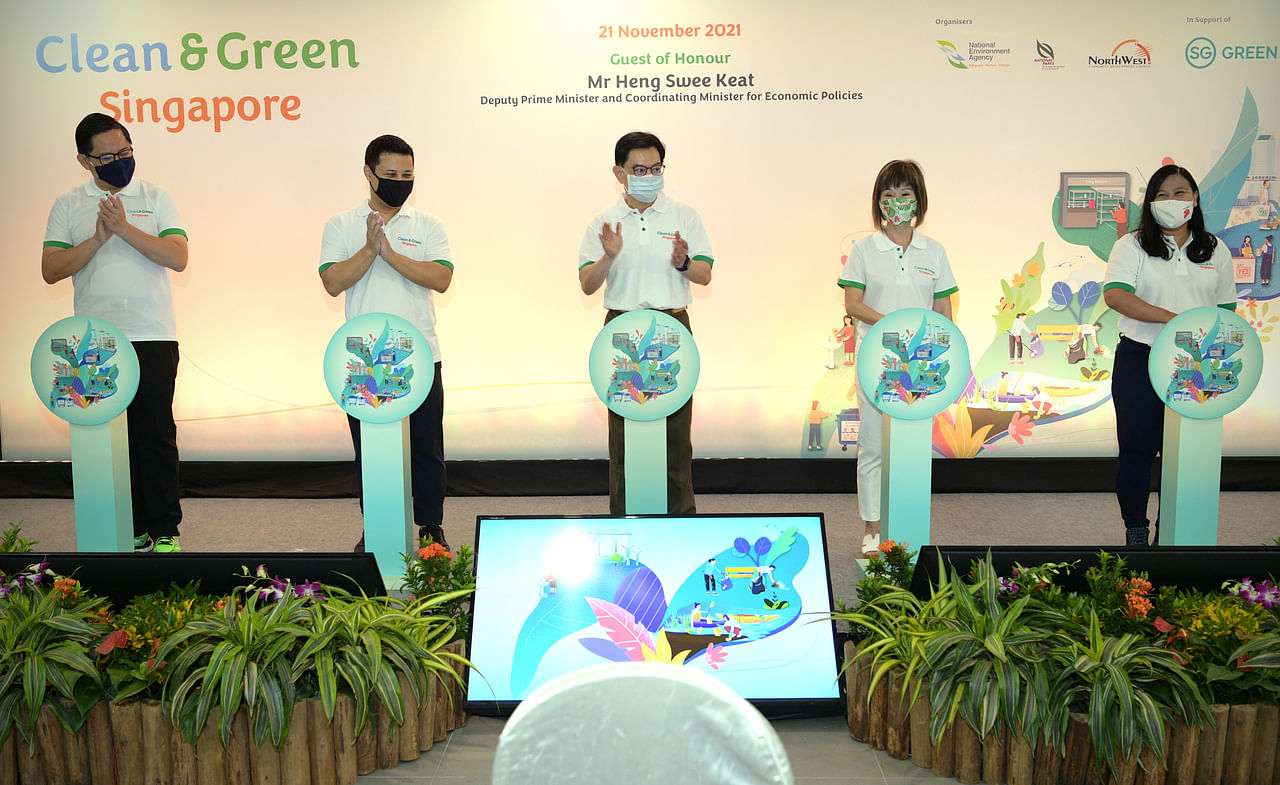
As Singapore marks 50 years since its first Tree Planting Day, each and every Singaporean can do his or her part to keep the country green and sustainable, Deputy Prime Minister Heng Swee Keat said on Sunday (Nov 21).
“The saplings planted 50 years ago have grown into beautiful trees with broad canopies and deep roots,” he said.
“In the same way, the Clean and Green Movement can continue to broaden and deepen in the years ahead.”
In a pre-recorded message from Mount Faber where one of Singapore’s founding fathers, Dr Goh Keng Swee, planted a raintree at the first Tree Planting Day in 1971, DPM Heng said tree planting has become a cherished national tradition that has evolved and expanded into the Clean and Green Singapore movement which was launched on Sunday.
In his speech, he outlined how people can keep the country green, reduce waste and ensure the city remains clean.
He said Singaporeans could keep the country green by taking part in the One Million Trees movement which aims to plant more than a million trees here over the next decade.
They could also partake in the national gardening movement and the NPark’s Gardening with Edibles programme, which saw some 460,000 seed packets distributed last year.
To reduce waste, DPM Heng said Singaporeans should buy only what they need and bring their own reusable bags and containers, while recycling regularly and correctly by depositing different materials in the correct bins and ensuring these are free of food contamination.

Businesses can also play their part, such as the 169 partners of the National Environment Agency’s Say Yes To Waste Less campaign.
Keeping the city clean is also important.
DPM Heng said the pandemic has taught us the importance of hygiene and cleanliness.
Initiatives to encourage this include the Clean Tables Campaign launched earlier this year to remind diners to return their trays after meals.
During the launch of Clean and Green Singapore 2021 at Kampung Admiralty, DPM Heng presented 16 national awards to grassroots organisations for their efforts in public hygiene, cleanliness, resource conservation and energy efficiency.
He also planted a critically endangered Knema curtisii tree with Mayor of North West District Alex Yam.
They were joined by Minister of National Development Desmond Lee and Senior Minister of State for Sustainability and the Environment Amy Khor, who planted a Horsfieldia polyspherula.
The trees are from the nutmeg family.
The event also saw the launch of CGS Experiences, an online series of webinars with a live host that will bring participants through a virtual tour of sites of significant environmental interest.
Twenty sessions are available for public booking till March 31 next year.
DPM Heng concluded his speech on Sunday with a Chinese saying that meant trees planted by former generations will provide shade for future generations.
“Much like how young saplings planted in 1971 have flourished into a tree planting movement, what we build today will have a lasting effect for our future generations,” said DPM Heng.
“Let us all play our part in building a cleaner and greener Singapore for tomorrow.”
Source The Straits Times

